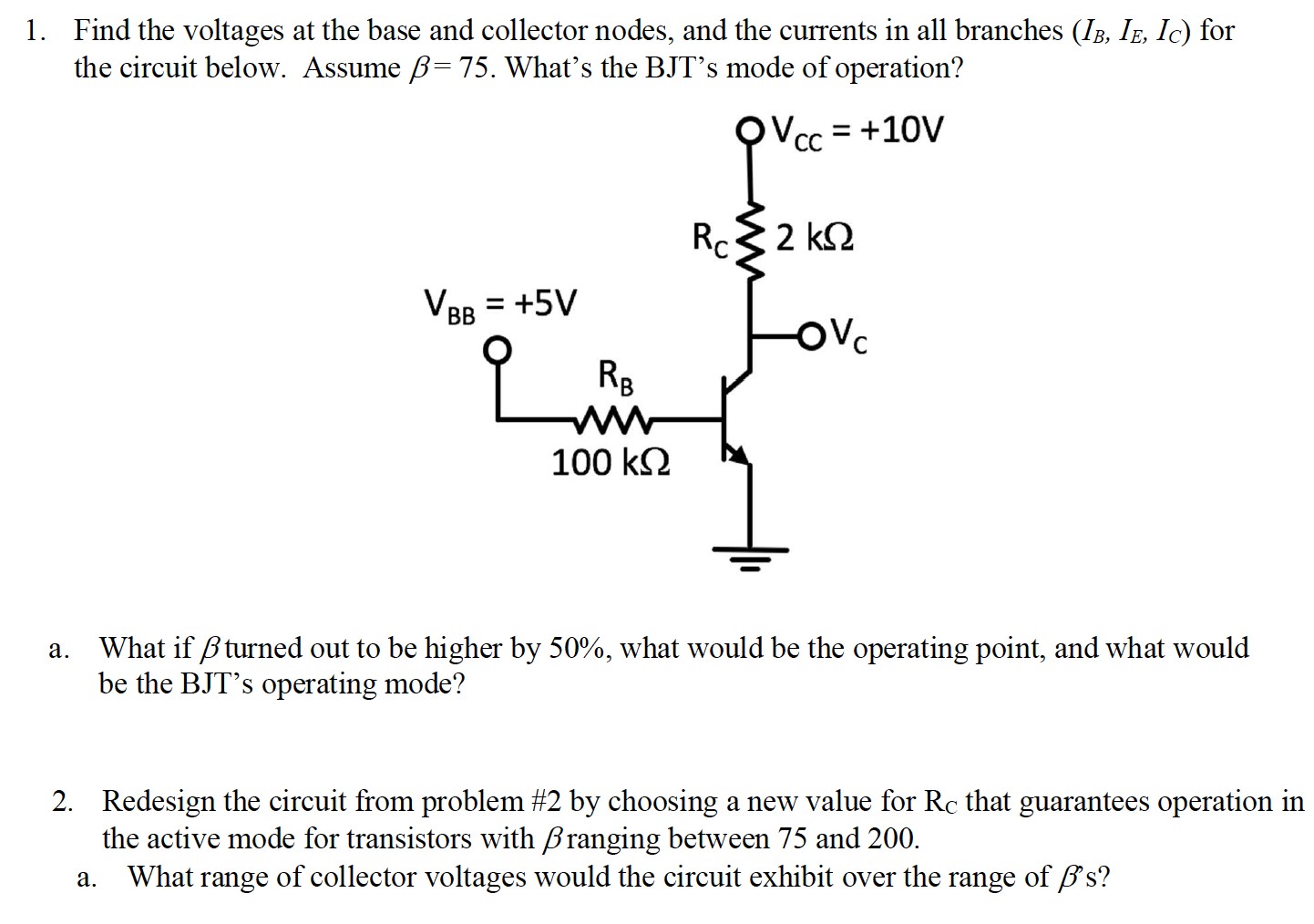Find the voltages at the base and collector nodes, and the currents in all branches (IB, IE, IC) for the circuit below. Assume β = 75. What's the BJT's mode of operation? a. What if β turned out to be higher by 50%, what would be the operating point, and what would be the BJT's operating mode? Redesign the circuit from problem #2 by choosing a new value for RC that guarantees operation in the active mode for transistors with β ranging between 75 and 200. a. What range of collector voltages would the circuit exhibit over the range of β s?
